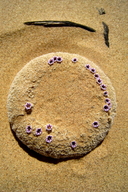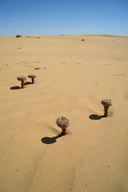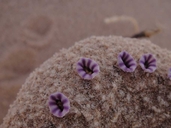Taxon Details
Pholisma sonorae
sand food
View Report Copy Link Calflora eFlora CCH CalPhotos iNaturalist
Taxon Summary:
Pholisma sonorae, commonly known as sand food, is a perennial herb (parasitic) in the Lennoaceae that is found in California and elsewhere. It occurs within Desert dunes, and Sonoran desert scrub (sandy), growing at elevations from 0 to 200 meters. Pholisma sonorae is ranked 1B.2, Plants Rare, Threatened or Endangered in California and Elsewhere; Moderately threatened in California.|
Scientific Name: Pholisma sonorae (Gray) Yatskievych |
||
|
Common Name: sand food |
||
| Family: | Lennoaceae | |
| Element Code: | PDLNN02020 | |
| USDA Plants Symbol: | PHSO | |
|
Synonyms/Other Names: |
||
| Name Status: |
JEF, FNA, POWO, IPNI, Tropicos |
|
| CA Rare Plant Rank: | 1B.2 |
| Fed List: | None |
| State List: | None |
| Global Rank: | G2 |
|
State Rank: |
S2 |
| Other Status: | BLM_S; SB_CalBG/RSABG |
|
CRPR Changes: |
|
| Add Date: | 1974-01-01 |
| Date Edited: | 2025-10-29 |
| Lifeform: perennial herb (parasitic) | ||||||||||||||
Blooming Period: (Mar)Apr-Jun
|
||||||||||||||
|
Elevation:
0 - 200 meters 0 - 655 feet |
||||||||||||||
General Habitats:
|
||||||||||||||
| Microhabitat Details: | ||||||||||||||
|
Microhabitat:
|
||||||||||||||
|
Notes: Parasitic on Eriogonum, Tiquilia, Ambrosia, and Pluchea spp. |
|
|
Threats: Threatened by vehicles, military activities, agriculture, habitat loss, and non-native plants. |
|
|
Taxonomy: See Memoirs of the American Academy of Arts and Sciences 5:327 (1854), Desert Plants 2(3):188-196 (1980) for species account, Systematic Botany 11(4):531-548 (1986) for revised treatment, and Madroño 50(2):110-114 (2003) for pollinator information. |
|
| Threat List Total: | 6 | |
| Total EOs | % of EOs | |
| EOs with Threat Listed: | 5 | 36 % |
| THREAT LIST: | ||
|---|---|---|
| Agriculture | 2 | 14% |
| ORV activity | 2 | 14% |
| Other | 1 | 7% |
| Vandalism/dumping/litter | 1 | 7% |
| Military operations | 1 | 7% |
| Non-native plant impacts | 1 | 7% |
| Total Occurrences: | 14 | ||||
| Element Occurrence Ranks: | |||||
|---|---|---|---|---|---|
| A | B | C | D | X | U |
| 1 | 1 | 0 | 0 | 0 | 12 |
| Occurrence Status: | |||||
|---|---|---|---|---|---|
| Historical >20 Years | 10 | ||||
| Recent <=20 Years | 4 | ||||
| Presence: | |||||
|---|---|---|---|---|---|
| Presumed Extant | 14 | ||||
| Possibly Extirpated | 0 | ||||
| Presumed Extirpated | 0 | ||||
| California Endemic: | |||||||||||||
| California Island: | |||||||||||||
|
States: Name (Code) Arizona (AZ), Baja California (BA), California (CA), Sonora, Mexico (SO) |
|||||||||||||
|
California Counties and Islands: Name (Code) Imperial (IMP) |
|||||||||||||
|
Quads: Name (Quad Code) Grays Well (3211468), Grays Well NE (3211467), Midway Well (3211561), Acolita (3311512), Amos (3311513), Cactus (3211478), Clyde (3211488), East of Acolita (3311511), Glamis (3211581), Glamis NW (3211582), Glamis SE (3211571), Holtville East (3211573), Holtville NE (3211583), Holtville West (3211574), Kane Spring (3311517), Ogilby (3211477), Tortuga (3311523) |
|||||||||||||
Notes:
|
|||||||||||||
 Presumed Extant
Presumed Extant
Click on quad for name. Hold Shift Key to use mouse scroll wheel



